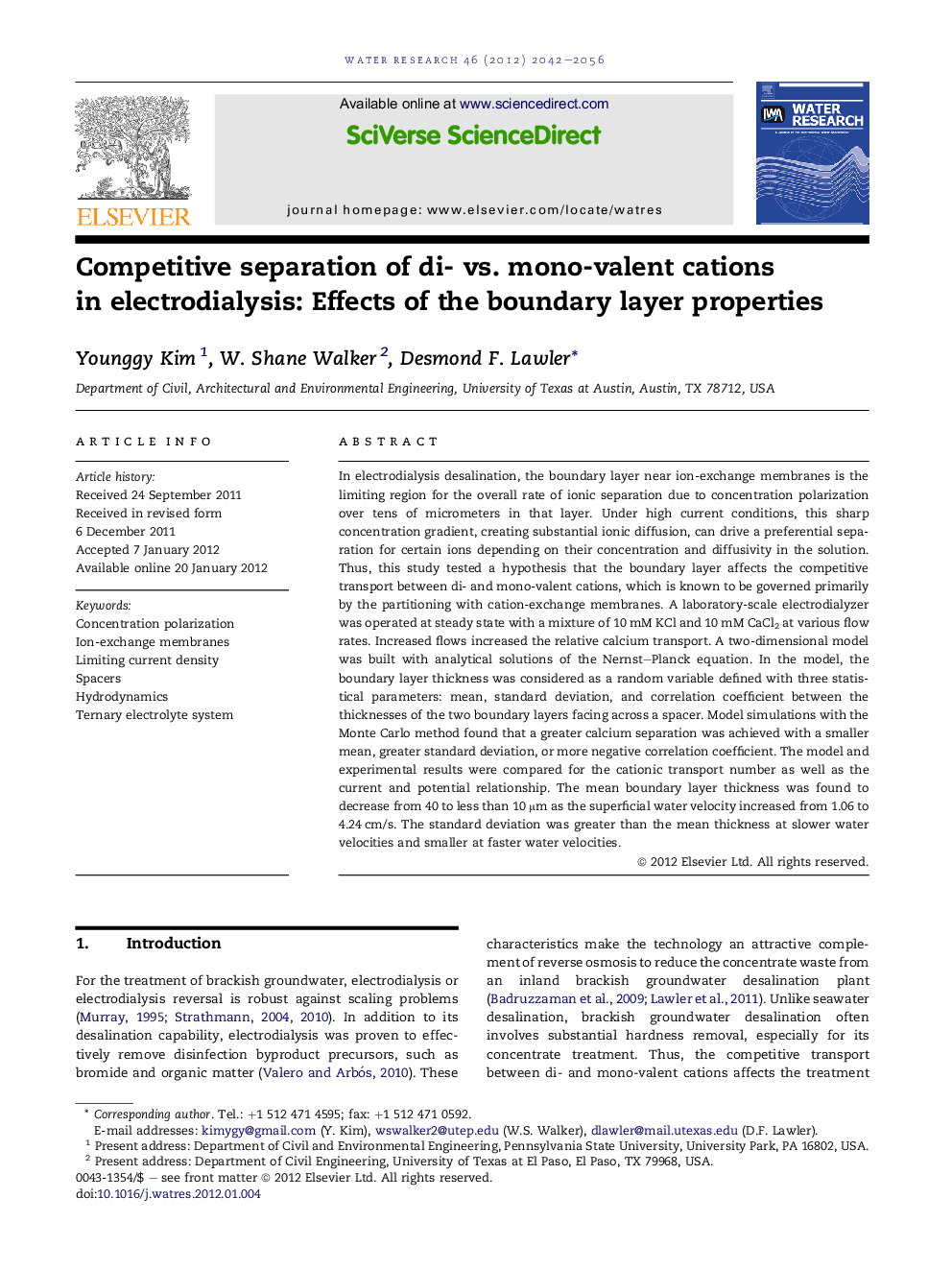| کد مقاله | کد نشریه | سال انتشار | مقاله انگلیسی | نسخه تمام متن |
|---|---|---|---|---|
| 4482908 | 1316873 | 2012 | 15 صفحه PDF | دانلود رایگان |

In electrodialysis desalination, the boundary layer near ion-exchange membranes is the limiting region for the overall rate of ionic separation due to concentration polarization over tens of micrometers in that layer. Under high current conditions, this sharp concentration gradient, creating substantial ionic diffusion, can drive a preferential separation for certain ions depending on their concentration and diffusivity in the solution. Thus, this study tested a hypothesis that the boundary layer affects the competitive transport between di- and mono-valent cations, which is known to be governed primarily by the partitioning with cation-exchange membranes. A laboratory-scale electrodialyzer was operated at steady state with a mixture of 10 mM KCl and 10 mM CaCl2 at various flow rates. Increased flows increased the relative calcium transport. A two-dimensional model was built with analytical solutions of the Nernst–Planck equation. In the model, the boundary layer thickness was considered as a random variable defined with three statistical parameters: mean, standard deviation, and correlation coefficient between the thicknesses of the two boundary layers facing across a spacer. Model simulations with the Monte Carlo method found that a greater calcium separation was achieved with a smaller mean, greater standard deviation, or more negative correlation coefficient. The model and experimental results were compared for the cationic transport number as well as the current and potential relationship. The mean boundary layer thickness was found to decrease from 40 to less than 10 μm as the superficial water velocity increased from 1.06 to 4.24 cm/s. The standard deviation was greater than the mean thickness at slower water velocities and smaller at faster water velocities.
Figure optionsDownload high-quality image (135 K)Download as PowerPoint slideHighlights
► Separation of K+ vs. Ca2+ is affected by properties of the boundary layer thickness.
► Ca2+ is separated faster by thinner boundary layers with greater spatial variation.
► Faster Ca2+ separation with negatively correlated two boundary layers across spacer.
► Mean thickness was 10 μm at 4 cm/s, increasing to 40 μm at 1 cm/s with meshed spacer.
► Standard deviation was greater than the mean at 1–2 cm/s and smaller at 3–4 cm/s.
Journal: Water Research - Volume 46, Issue 7, 1 May 2012, Pages 2042–2056